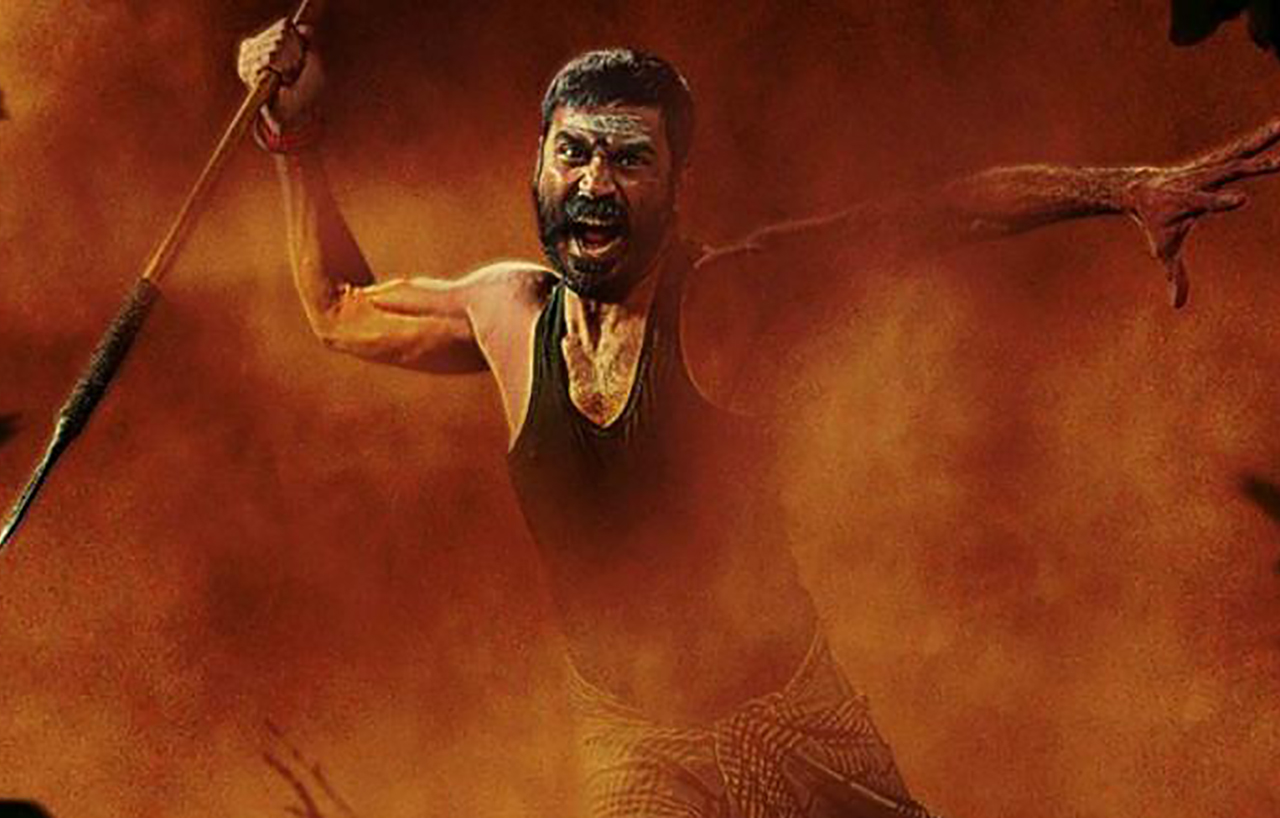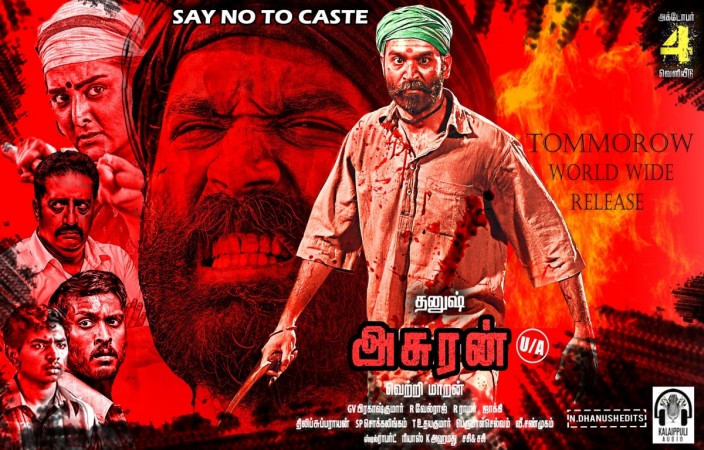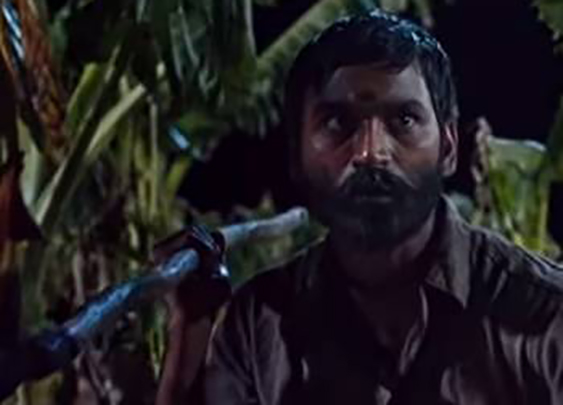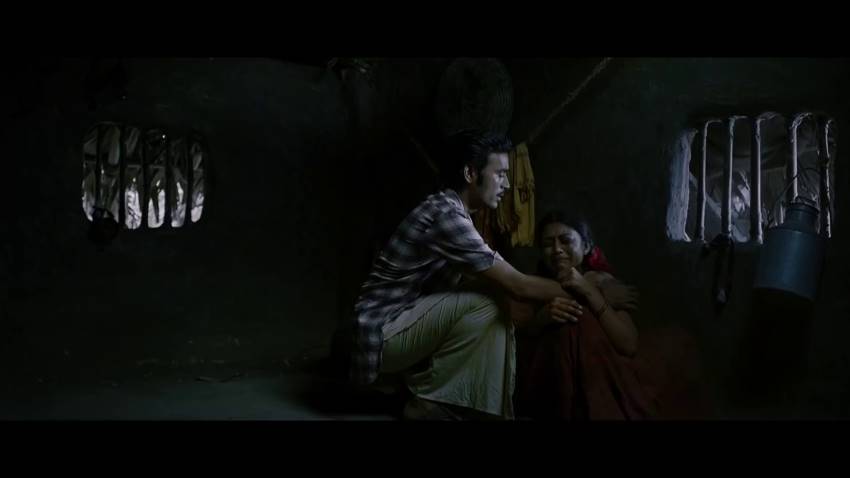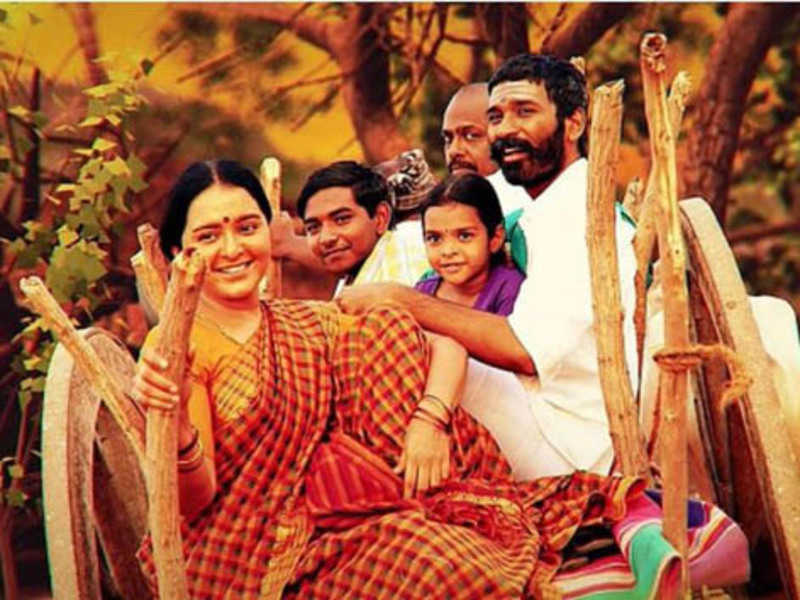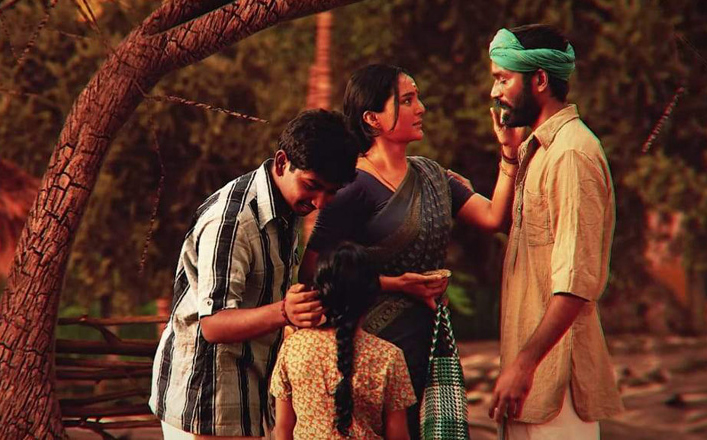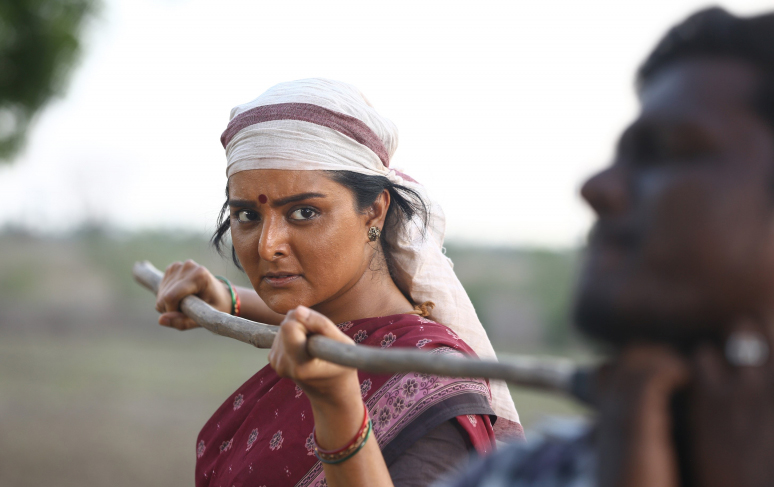A Political Critique of Asuran, A Tamil Movie, by the TNLabour Team. First published in TNLabour.
(Spoiler Alert: there might be discussions that will reveal plot scenes)
Creative work doesn’t merely entertain a weary population but also stimulates our thought, deepens our relationships, and allows us to dream of a better future. In a commodified world, however, the pressure to generate monetary value outpaces the demands of the art form. Vetrimaran’s Asuran navigates this challenge by offering a riveting commercial screenplay to a script that delves deep into the scourge of caste oppression that continues to dominate our society.
The movie, an adaptation of an acclaimed Tamil novel Vekkai by Poomani, takes us through the caste ridden politics of rural Tamilnadu, where political power, social hierarchies, and wealth enmesh to exploit the Dalits and enrich the upper castes. It is also a deep dive into the struggles and sacrifices that the oppressed communities make in order to survive with some dignity.
(The movie has taken many creative liberties from the novel. This is only a political critique of the movie and not the novel.)
The Story
Set in the backdrop of rural Tamilnadu in the late 1980s and early 1990s, the story unfolds through the eyes of Sivasamy (played by Dhanush), a middle aged small farmer. He and his family of five cultivate a small piece of arable land, inherited from his wife’s family. It is implied that the family, whose relatives are shepherds, gained possession of this land under the Panchamani (Depressed Classes Land Allotment) scheme under the British Raj.
The local landlord, who is referred to as Vadakuran, wants to take possession of that land to build a cement factory. Vadakuran, who belongs to the upper caste, has the grudging support of the local panchayat leaders, who want to avoid conflict with the Dalit community that lives separately. He conspires to force Sivasamy to sell his lands, leading to clashes between Sivasamy’s eldest son and Vadakuran’s family. Sivasamy attempts to make peace with the upper caste, being humiliated by them, yet admonishing his son for his rash actions.
The feud with Vadakuran leads to the murder of Sivasamy’s eldest son. Following the gruesome murder, the police and even the courts refuse to investigate the case and bring justice to the family. Worse, the family is denied access to their son’s body as the police claim they could not identify the body properly. As the family mourns and struggles to come to terms with the loss, Chidambaram, Sivasamy’s second son, decides to avenge his brother’s death. Chidambaram kills Vadakuran, and is identified by the locals. Sivasamy decides to protect his son and family by running away from the village, deep into the forest.
As the family, now separated in flight, struggles to escape the police and the goons sent by Vadakuran’s family, Sivasamy’s past life is revealed to us. Here, Sivasamy, the submissive Dalit farmer disappears. The youthful Sivasamy is an angry young man, a skilled liquor brewer working for an upper caste mill owner. Though he is loyal to his master and his master showers him with appreciation, he soon realises that his master would stand with members of his own caste rather than with justice.
Sivasamy joins hands with his elder brother Murugan, who is already organizing the Dalit families to demand back the Panchami lands appropriated by the upper caste. In the ensuing struggle, Sivasamy loses his entire family including his fiancée. Though he violently avenges his family’s extermination, he loses all meaning in life. He becomes a fugitive, who is taken in by the brother of his would-be wife and rehabilitated.
In his present life, Sivasamy decides to protect his family from violence and harm. He becomes a pacifist who would rather submit to caste discrimination than challenge it. Unfortunately, he finds himself yet again in fatal confrontation with the system personified by Vadakuran.
Does he protect his family and his possessions? Or, does he protect his dignity?
A Socio-Political Critique
The script neatly weaves for us the dynamics of caste exploitation and oppression. Rather than falling into cliched scenes or symbology, it lays out the subtle manifestations of caste hegemony, in the social, political, and economic sphere. While Vadakuran and the mill owner, the conspiratorial upper caste members, stand out as the ‘villains’ in the narrative, the upper caste bystanders who tolerate and encourage the stark discrimination or the violent reprisals, speak volumes with their silence.
The economic gain and political power from exploitation might accrue to only a few among them, but the majority of the upper caste members accept and even revel in the social status and capital that they gain through maintaining the structures of discrimination and cultural oppression. This is revealed in a scene when Sivasamy falls at the feet of an entire village in apology. Some of the families even send their little children to reinforce the hierarchy.
The economic disparity and the social distance between the Dalits and the rest of the village is visually and subtly conveyed to the audience. The frugal life of the Dalits stands in stark contrast to the thriving life in the town, into which Sivasamy or other Dalits venture only to seek favours. The Dalits know their social position and the “dos and don’ts” that come with it. They don’t intend to transgress it.
While the upper caste don’t restrict their entry into the town, we realise that the town spaces are alien to them. They enter as servants or as subjects. This is conveyed very well through the body language of the actors who have done a phenomenal job. Public humiliation and assault were the penalty for any transgression, such as in the case with Sivasamy’s fiancée for wearing slippers to school.
Land remains the principal resource over which conflicts erupt. Whereas the Dalits seek and hold on to small parcels of land as their primary source of secure livelihood, to the landlords the possession of land is key to maintaining their hegemony, continuing their exploitation, and securing their economic mobility. Thus, they attempt to dispossess the Dalits of every bit of land.
In this struggle, the State stands unapologetically as an accomplice to the conspiracies of the upper castes. The police inspectors act as accomplices to murder, while bureaucrats and judges remain indifferent and at best helpless to prevent dispossession. While the violence perpetrated by the upper castes hardly evokes any reaction from the police, any attempt by the oppressed to stand up to this violence, even attempts at self defense, comes at the cost of suffering state violence in the form of arbitrary arrests, jail terms, or being forced into the life of a fugitive.
These resonate with us because they are not fiction. Adivasis and Dalits suffer dispossession on a daily basis. Workers in their factories can be driven away from their tools at any time. Sudden and violent separation from their means of production, and the destitution of labour is a real and constant danger. Any attempt to resist is often met with violence, be it by a bouncer at a factory gate, police standing guard at factories during strikes, or paramilitary forces parading through a town under curfew.
Yet, we as the ‘Common Man’, often berate any acts of violence by the oppressed based on news that is deliberately divorced of context. This movie moves us to delve into the cause of such violent expressions, while revealing the imbalance in state outrage over individual violence.
A Critique of Resistance and Struggle
The trajectory of the struggle, when we look at it linearly, shows that the struggle is initiated collectively. Murugan, Sivasamy’s brother, under the guidance of an upper caste lawyer organizes the Dalit families to reclaim the Panchami lands, which had been usurped by the landlords under various pretexts.
Sivasamy, at the outset of this struggle, is working as a brewer for the upper caste mill owner. Events unfold which help Sivasamy understand that while his employer is willing to treat him tolerably because of his liquor brewing skills, he is only interested in protecting his caste members in a public feud between Sivasamy and a manager, who is one of his own caste. That is, Sivasamy realises that the mill owner ultimate loyalties lie with his caste.
When the collective struggle ends in tragedy in its nascent stages, and Murugan and Sivasamy’s family is killed, two divergent tracks of struggles emerge. The movie tracks the trajectory of Sivasamy, the protaganist, who avenges the murder of his family by killing the upper caste perpetrators and becomes a fugitive.
The trajectory of the upper caste lawyer is not shown. It is revealed later through a few scenes that the lawyer seems to have moved further into judicial engagements. While he plays the role of the intellectual in the first struggle, it also apparent that he can draw upon other organizational resources. However, his activism seems limited to providing judicial support to oppressed communities in their fight for their rights. Even here, he emerges as the one who mediates between the upper castes and the lower castes, through the limited avenues offered by the law and the State. He is unable to either defend the actions of Sivasamy, nor bring the perpetrators of violence to justice. The social capital that an educated, progressive elite can muster is wasted in vain efforts before the State.
Both Sivasamy and the lawyer do not seem to provide the momentum or capability required to revive the earlier collective struggles. The actions of Sivasamy and his sons then takes on a more individualistic nature. While Sivasamy reconciles to submitting to the oppression, his sons adopt a more militant yet individualistic response to injustice. The lawyer’s action is confined to providing legal support to the family after their actions are determined to be ‘criminal’ by the State. The scene where the lawyer is forced to plead before the judge when Sivasamy does not turn up for the court hearing is a telling account of the limitations of these actions and how much ground has been lost to the institutions that reinforce oppressive social orders. This is in contrast to the manner the lawyer along with Murugan and other dalits speaks belligerently to a State official during the earlier struggle.
In the first struggle to reclaim Panchami lands, the Dalit families were active participants. They actively mobilised for the protests and also joined the legal fight. They faced the violence that ensued collectively. However, in the second struggle, the fight against upper caste land sharks fell exclusively on the individual Dalit land owners. The other Dalit families were not involved until it had taken very violent turn. Even at that juncture, they are relegated to providing a half-hearted effort at hiding the fugitive families of Sivasamy, after the murder of Vadakuran.
This trajectory, while providing plenty of scope for individual heroism, fails to provide a mechanism for bringing about the necessary social transformations that, historically, have been successful in supplying solutions for marginalised communities.
Even in the real world, we face similar choices in our struggles for liberation and emancipation. Often, we fall back on instruments of the State like the courts or the legislature to secure some relief for us. Failing this, we end up looking for a heroic leader behind whom we can all take shelter. Just as is depicted in the movie, neither is a long term possibility even though it might seemingly have short term benefits .
The movie itself very clearly explains that the state is not an impartial arbiter in this class war. While it might mask itself through strategic concessions and lofty rhetoric, when oppression is challenged, it will fall in line with the elite caste and class members and violently curb resistance. We see it across the country. In our factories and our fields, our rights to due process and even expression of dissent is curbed by the very courts that are guarantors of our rights. It is no coincidence that constitutional rights remains suspended in Kashmir at the time when people need it the most to express themselves. There is no state institution that can stand up to this betrayal. Therefore, to rely on incremental statist attempts to fight structural exploitation and violence is a severely limited method of resistance.
Individual action, be it the vigilante kind, or in the form of a charismatic mass leader, or a social media activist, is even more limited and bound to fail. For one, it is not often that you have a well-defined villain ready to be brought to justice. Quite often it is the system that constrains people in various ways, and these constraints help perpetuate oppression. Secondly, the political power and financial resources that the ruling class commands can easily overwhelm individuals. They can either co-opt these leaders or silence them through other means.
In the movie, Sivasamy is fighting to keep his land from being appropriated by the upper caste landlord. He correctly evaluates the process of dispossession at the heart of the class-caste conflict. However, due to his previous experiences, he chooses to keep the struggle individualised between the landlord and his family. Even the Dalit community is not portrayed as taking a proactive role in collectively resolving his issue. In the climax, though the community members rush to the aid of Sivasamy and his son, they accept the upper caste premise that the conflict is essentially between two families. This is contrary to the political-economic reality. These conflicts, though manifesting as individual conflicts, are in fact rooted in class-caste hegemony. Historically the challenge to the hegemony has come from organized community of the oppressed. It is only in collective organization that we can effectively deploy our resources, protect and support each other, and present a formidable defence that will force the system to change.
In the end, Sivasamy tells his son Chidambaram to educate himself, as knowledge is something that the upper castes cannot take away from him. He urges his son to use that education to help people unify. While it cannot be disputed that education, formal and informal, is essential, it is also important that we organize as a collective and fight. We might not have all the answers, we seldom do. It is this struggle that teaches us the values and strategies. So let us remember Babasaheb.
Educate, Organize, Agitate
TNLabour is a working class media.

